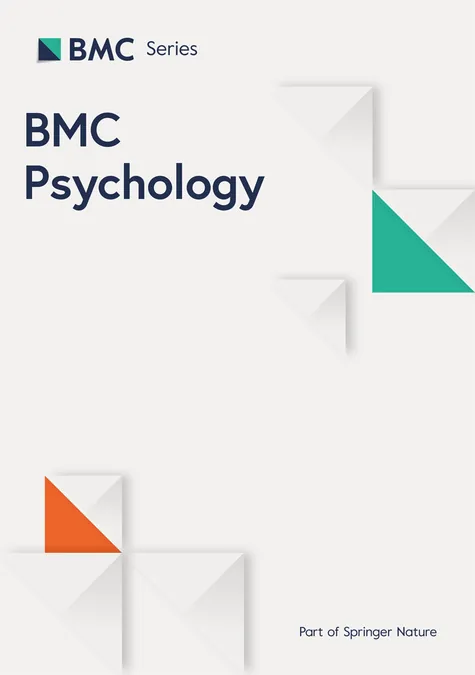
Unlocking the Mind: How Early Maladaptive Schemas Shape Trichotillomania and Skin-Picking Disorders
2025-07-15
Author: Mei
Understanding Trichotillomania and Skin-Picking Disorder
Did you know that trichotillomania (TTM) and skin-picking disorder (SPD) affect about 2% to 4% of people? These complex conditions drive individuals to engage in repetitive hair-pulling and skin-picking behaviors, creating significant psychological distress and physical harm. The DSM-5 and ICD-11 classify them under body-focused repetitive behavior disorders, emphasizing their serious nature and connection to obsessive-compulsive disorders.
The Hidden Pain Behind BFRBs
Epidemiological studies reveal that many with TTM and SPD often grapple with additional mental health challenges. For instance, a study involving over 10,000 adults in the U.S. found that 1.7% reported current TTM, with a staggering 79% also battling other psychiatric conditions, including anxiety and depression. These disorders often peak during young adulthood, underscoring the urgent need for effective interventions.
Decoding the Behaviors: Automatic vs. Focused
TTM and SPD manifest in different styles, primarily divided into automatic and focused behaviors. Automatic behaviors occur unconsciously—like pulling hair while watching TV—whereas focused behaviors are more intentional, often surfacing in response to inner turmoil. Understanding these triggers can pave the way for targeted therapies that address the root emotional pain driving these behaviors.
The Role of Personality in BFRBs
Recent research delves deeper into how personality traits influence TTM and SPD severity. A study revealed that higher neuroticism and lower agreeableness could predict greater symptom severity. Interestingly, individuals with a high degree of openness may face powerful urges yet hesitate to succumb due to their ability to accept internal experiences.
The Undiscovered Schema Connection
Emerging studies are revealing intriguing links between early maladaptive schemas (EMSs) and the severity of TTM and SPD. These schemas, formed during childhood, encapsulate negative beliefs about oneself and relationships. Higher levels of EMSs correlate with increased symptom severity in various psychological disorders, including OCD, which shares several traits with TTM and SPD.
What the Research Reveals
Two significant studies spotlight the connections between EMSs and BFRBs, though results vary. One involved a small TTM sample, limiting generalizability, while another focused on a community sample, potentially diluting the findings due to diverse backgrounds. Thus, further research with larger clinical populations is essential.
Current Study Focus and Findings
The latest research examined EMSs in a large clinical sample of TTM and SPD patients compared to an OCD group. Strikingly, no significant differences emerged among the three groups regarding schema severity. Nonetheless, numerous EMSs exhibited strong positive correlations with TTM and SPD severity, specifically highlighting abandonment and defectiveness as critical factors.
Implications for Treatment
The findings advocate for a more personalized treatment approach, suggesting that addressing negative self-beliefs and EMSs could enhance therapy outcomes. Innovative therapies such as Schema-Focused Therapy are gaining traction, as they directly target these maladaptive schemas, offering hope to those suffering from BFRBs.
Concluding Thoughts
The journey through TTM and SPD is fraught with emotional turmoil, compounded by underlying psychological schemas. As we deepen our understanding of these relationships, we pave the way for innovative treatments that could transform lives. It’s time to shine a light on these often-overlooked disorders and ensure that everyone has access to the help they need.


 Brasil (PT)
Brasil (PT)
 Canada (EN)
Canada (EN)
 Chile (ES)
Chile (ES)
 Česko (CS)
Česko (CS)
 대한민국 (KO)
대한민국 (KO)
 España (ES)
España (ES)
 France (FR)
France (FR)
 Hong Kong (EN)
Hong Kong (EN)
 Italia (IT)
Italia (IT)
 日本 (JA)
日本 (JA)
 Magyarország (HU)
Magyarország (HU)
 Norge (NO)
Norge (NO)
 Polska (PL)
Polska (PL)
 Schweiz (DE)
Schweiz (DE)
 Singapore (EN)
Singapore (EN)
 Sverige (SV)
Sverige (SV)
 Suomi (FI)
Suomi (FI)
 Türkiye (TR)
Türkiye (TR)
 الإمارات العربية المتحدة (AR)
الإمارات العربية المتحدة (AR)